Prem Natarajan
TrainFors: A Large Benchmark Training Dataset for Image Manipulation Detection and Localization
Aug 10, 2023Abstract:The evaluation datasets and metrics for image manipulation detection and localization (IMDL) research have been standardized. But the training dataset for such a task is still nonstandard. Previous researchers have used unconventional and deviating datasets to train neural networks for detecting image forgeries and localizing pixel maps of manipulated regions. For a fair comparison, the training set, test set, and evaluation metrics should be persistent. Hence, comparing the existing methods may not seem fair as the results depend heavily on the training datasets as well as the model architecture. Moreover, none of the previous works release the synthetic training dataset used for the IMDL task. We propose a standardized benchmark training dataset for image splicing, copy-move forgery, removal forgery, and image enhancement forgery. Furthermore, we identify the problems with the existing IMDL datasets and propose the required modifications. We also train the state-of-the-art IMDL methods on our proposed TrainFors1 dataset for a fair evaluation and report the actual performance of these methods under similar conditions.
Alexa, play with robot: Introducing the First Alexa Prize SimBot Challenge on Embodied AI
Aug 09, 2023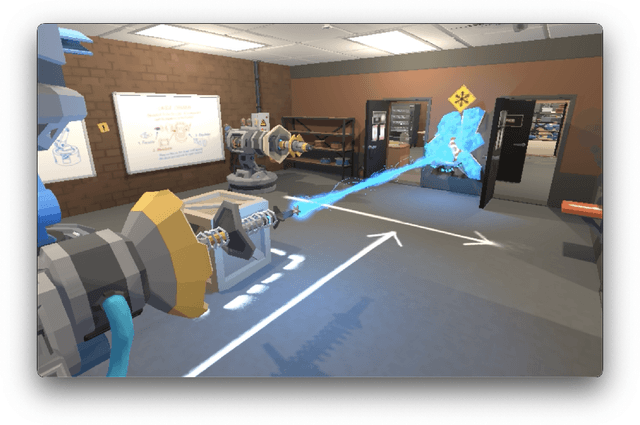



Abstract:The Alexa Prize program has empowered numerous university students to explore, experiment, and showcase their talents in building conversational agents through challenges like the SocialBot Grand Challenge and the TaskBot Challenge. As conversational agents increasingly appear in multimodal and embodied contexts, it is important to explore the affordances of conversational interaction augmented with computer vision and physical embodiment. This paper describes the SimBot Challenge, a new challenge in which university teams compete to build robot assistants that complete tasks in a simulated physical environment. This paper provides an overview of the SimBot Challenge, which included both online and offline challenge phases. We describe the infrastructure and support provided to the teams including Alexa Arena, the simulated environment, and the ML toolkit provided to teams to accelerate their building of vision and language models. We summarize the approaches the participating teams took to overcome research challenges and extract key lessons learned. Finally, we provide analysis of the performance of the competing SimBots during the competition.
AMPERE: AMR-Aware Prefix for Generation-Based Event Argument Extraction Model
May 26, 2023Abstract:Event argument extraction (EAE) identifies event arguments and their specific roles for a given event. Recent advancement in generation-based EAE models has shown great performance and generalizability over classification-based models. However, existing generation-based EAE models mostly focus on problem re-formulation and prompt design, without incorporating additional information that has been shown to be effective for classification-based models, such as the abstract meaning representation (AMR) of the input passages. Incorporating such information into generation-based models is challenging due to the heterogeneous nature of the natural language form prevalently used in generation-based models and the structured form of AMRs. In this work, we study strategies to incorporate AMR into generation-based EAE models. We propose AMPERE, which generates AMR-aware prefixes for every layer of the generation model. Thus, the prefix introduces AMR information to the generation-based EAE model and then improves the generation. We also introduce an adjusted copy mechanism to AMPERE to help overcome potential noises brought by the AMR graph. Comprehensive experiments and analyses on ACE2005 and ERE datasets show that AMPERE can get 4% - 10% absolute F1 score improvements with reduced training data and it is in general powerful across different training sizes.
Alexa Arena: A User-Centric Interactive Platform for Embodied AI
Mar 02, 2023



Abstract:We introduce Alexa Arena, a user-centric simulation platform for Embodied AI (EAI) research. Alexa Arena provides a variety of multi-room layouts and interactable objects, for the creation of human-robot interaction (HRI) missions. With user-friendly graphics and control mechanisms, Alexa Arena supports the development of gamified robotic tasks readily accessible to general human users, thus opening a new venue for high-efficiency HRI data collection and EAI system evaluation. Along with the platform, we introduce a dialog-enabled instruction-following benchmark and provide baseline results for it. We make Alexa Arena publicly available to facilitate research in building generalizable and assistive embodied agents.
AlexaTM 20B: Few-Shot Learning Using a Large-Scale Multilingual Seq2Seq Model
Aug 03, 2022



Abstract:In this work, we demonstrate that multilingual large-scale sequence-to-sequence (seq2seq) models, pre-trained on a mixture of denoising and Causal Language Modeling (CLM) tasks, are more efficient few-shot learners than decoder-only models on various tasks. In particular, we train a 20 billion parameter multilingual seq2seq model called Alexa Teacher Model (AlexaTM 20B) and show that it achieves state-of-the-art (SOTA) performance on 1-shot summarization tasks, outperforming a much larger 540B PaLM decoder model. AlexaTM 20B also achieves SOTA in 1-shot machine translation, especially for low-resource languages, across almost all language pairs supported by the model (Arabic, English, French, German, Hindi, Italian, Japanese, Marathi, Portuguese, Spanish, Tamil, and Telugu) on Flores-101 dataset. We also show in zero-shot setting, AlexaTM 20B outperforms GPT3 (175B) on SuperGLUE and SQuADv2 datasets and provides SOTA performance on multilingual tasks such as XNLI, XCOPA, Paws-X, and XWinograd. Overall, our results present a compelling case for seq2seq models as a powerful alternative to decoder-only models for Large-scale Language Model (LLM) training.
MONet: Multi-scale Overlap Network for Duplication Detection in Biomedical Images
Jul 19, 2022



Abstract:Manipulation of biomedical images to misrepresent experimental results has plagued the biomedical community for a while. Recent interest in the problem led to the curation of a dataset and associated tasks to promote the development of biomedical forensic methods. Of these, the largest manipulation detection task focuses on the detection of duplicated regions between images. Traditional computer-vision based forensic models trained on natural images are not designed to overcome the challenges presented by biomedical images. We propose a multi-scale overlap detection model to detect duplicated image regions. Our model is structured to find duplication hierarchically, so as to reduce the number of patch operations. It achieves state-of-the-art performance overall and on multiple biomedical image categories.
Alexa Teacher Model: Pretraining and Distilling Multi-Billion-Parameter Encoders for Natural Language Understanding Systems
Jun 15, 2022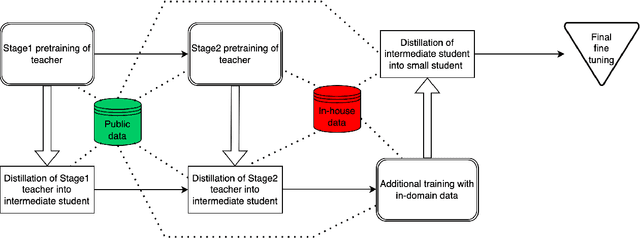
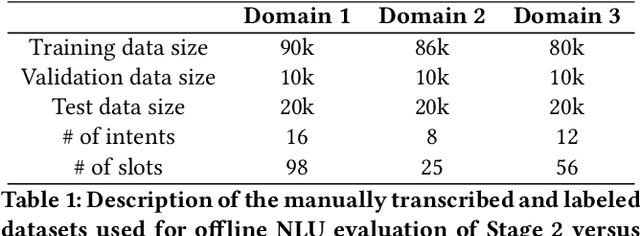
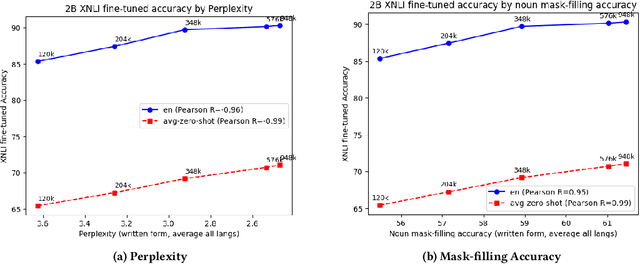
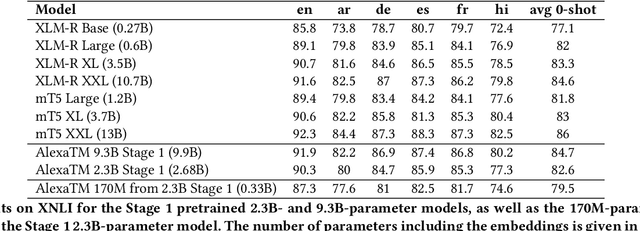
Abstract:We present results from a large-scale experiment on pretraining encoders with non-embedding parameter counts ranging from 700M to 9.3B, their subsequent distillation into smaller models ranging from 17M-170M parameters, and their application to the Natural Language Understanding (NLU) component of a virtual assistant system. Though we train using 70% spoken-form data, our teacher models perform comparably to XLM-R and mT5 when evaluated on the written-form Cross-lingual Natural Language Inference (XNLI) corpus. We perform a second stage of pretraining on our teacher models using in-domain data from our system, improving error rates by 3.86% relative for intent classification and 7.01% relative for slot filling. We find that even a 170M-parameter model distilled from our Stage 2 teacher model has 2.88% better intent classification and 7.69% better slot filling error rates when compared to the 2.3B-parameter teacher trained only on public data (Stage 1), emphasizing the importance of in-domain data for pretraining. When evaluated offline using labeled NLU data, our 17M-parameter Stage 2 distilled model outperforms both XLM-R Base (85M params) and DistillBERT (42M params) by 4.23% to 6.14%, respectively. Finally, we present results from a full virtual assistant experimentation platform, where we find that models trained using our pretraining and distillation pipeline outperform models distilled from 85M-parameter teachers by 3.74%-4.91% on an automatic measurement of full-system user dissatisfaction.
* KDD 2022
MASSIVE: A 1M-Example Multilingual Natural Language Understanding Dataset with 51 Typologically-Diverse Languages
Apr 18, 2022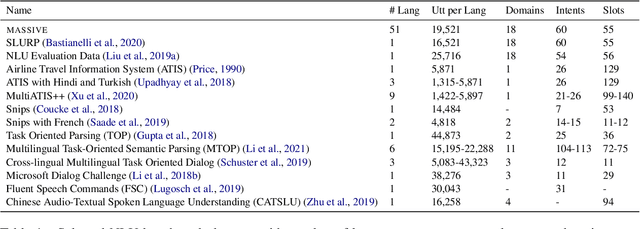
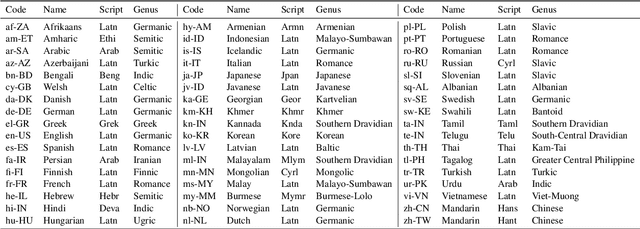

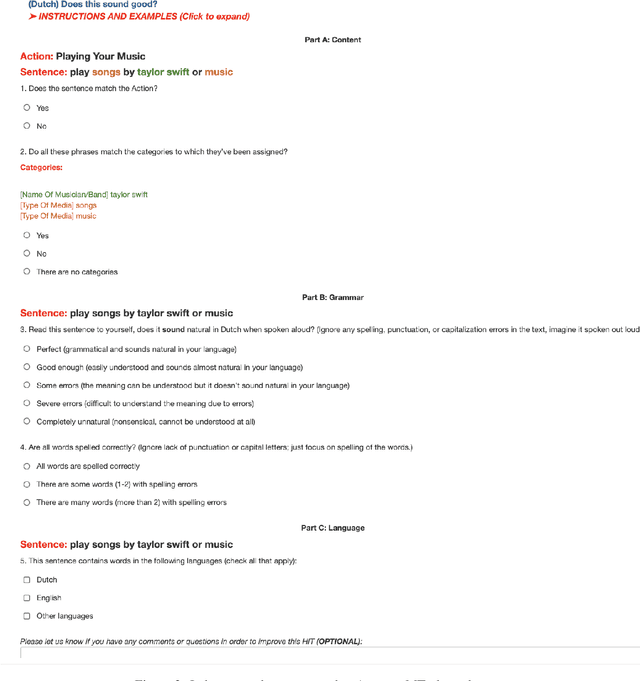
Abstract:We present the MASSIVE dataset--Multilingual Amazon Slu resource package (SLURP) for Slot-filling, Intent classification, and Virtual assistant Evaluation. MASSIVE contains 1M realistic, parallel, labeled virtual assistant utterances spanning 51 languages, 18 domains, 60 intents, and 55 slots. MASSIVE was created by tasking professional translators to localize the English-only SLURP dataset into 50 typologically diverse languages from 29 genera. We also present modeling results on XLM-R and mT5, including exact match accuracy, intent classification accuracy, and slot-filling F1 score. We have released our dataset, modeling code, and models publicly.
A Thousand Words Are Worth More Than a Picture: Natural Language-Centric Outside-Knowledge Visual Question Answering
Jan 14, 2022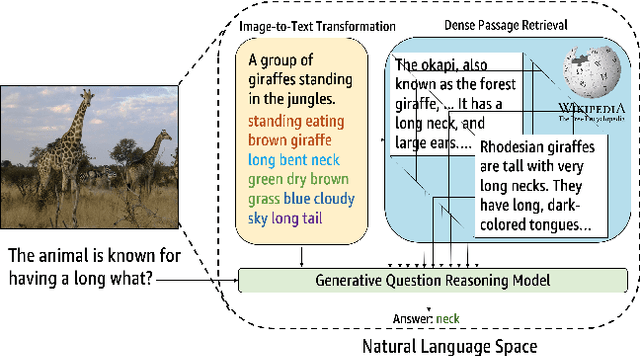
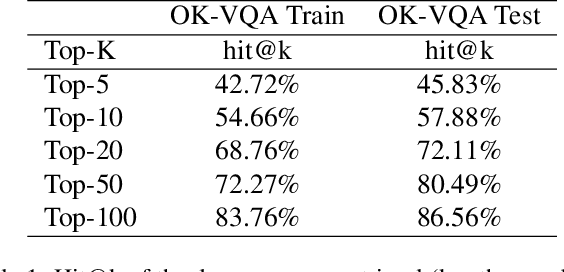

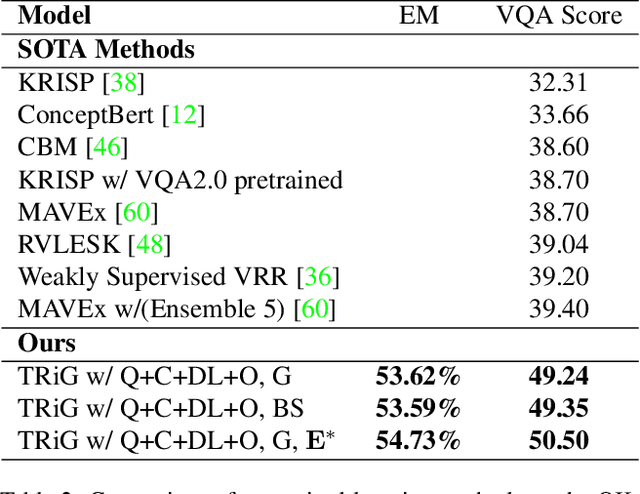
Abstract:Outside-knowledge visual question answering (OK-VQA) requires the agent to comprehend the image, make use of relevant knowledge from the entire web, and digest all the information to answer the question. Most previous works address the problem by first fusing the image and question in the multi-modal space, which is inflexible for further fusion with a vast amount of external knowledge. In this paper, we call for a paradigm shift for the OK-VQA task, which transforms the image into plain text, so that we can enable knowledge passage retrieval, and generative question-answering in the natural language space. This paradigm takes advantage of the sheer volume of gigantic knowledge bases and the richness of pre-trained language models. A Transform-Retrieve-Generate framework (TRiG) framework is proposed, which can be plug-and-played with alternative image-to-text models and textual knowledge bases. Experimental results show that our TRiG framework outperforms all state-of-the-art supervised methods by at least 11.1% absolute margin.
BioFors: A Large Biomedical Image Forensics Dataset
Aug 30, 2021



Abstract:Research in media forensics has gained traction to combat the spread of misinformation. However, most of this research has been directed towards content generated on social media. Biomedical image forensics is a related problem, where manipulation or misuse of images reported in biomedical research documents is of serious concern. The problem has failed to gain momentum beyond an academic discussion due to an absence of benchmark datasets and standardized tasks. In this paper we present BioFors -- the first dataset for benchmarking common biomedical image manipulations. BioFors comprises 47,805 images extracted from 1,031 open-source research papers. Images in BioFors are divided into four categories -- Microscopy, Blot/Gel, FACS and Macroscopy. We also propose three tasks for forensic analysis -- external duplication detection, internal duplication detection and cut/sharp-transition detection. We benchmark BioFors on all tasks with suitable state-of-the-art algorithms. Our results and analysis show that existing algorithms developed on common computer vision datasets are not robust when applied to biomedical images, validating that more research is required to address the unique challenges of biomedical image forensics.
 Add to Chrome
Add to Chrome Add to Firefox
Add to Firefox Add to Edge
Add to Edge